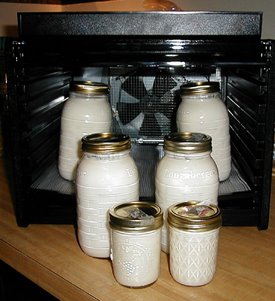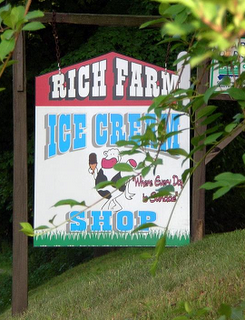My biggest barrier to making my own raw milk yogurt was in finding a reliable low-heat source. My electric oven does not have a pilot and the light bulb lights intermittently. With the arrival of my Excalibur Dehydrator, I am ready to go!
I do like the organic local Hawthorne Valley yogurt as well as the organic regional brands from Seven Stars Farm (Phoenixville, PA) and Stonyfield Farm (Londonderry, NH). The problem for me is that these are all made from pasteurized milk because that is the law. Apparently, the few states that allow raw milk sales do not allow for the production and sale of raw milk yogurt. It seems to me that the food laws that are designed to protect us are the strangest of all.
So, I researched several recipes and it comes down to
– how much to heat the milk
– how much starter yogurt to add (for the live cultures)
– the incubation temperature
– the incubation time
The most popular milk-heating temperature is 110°. I did see one recipe that called for heating the milk to 180° and then letting it cool to 110°, but it seems it would defeat the purpose of using raw milk. I thought that the enzymes and beneficial bacteria are killed at 130°.
The recommended amount of starter yogurt to add varies from 1/8 of a cup to 1/4 (if you’re using commercial, which by default means pasteurized, yogurt). Most say to use about twice as much if you’re using your own previous batch of raw milk yogurt.
The suggested incubation temperature ranges from 90° to 110° and an often-suggested period is eight hours.
I got another recipe that called for heating the milk to 90°, adding 1/2 of a cup of (commercial) starter and incubating it at 90° to 100° for 18-36 hours. I have had this yogurt and it is exceptional, but this being my first time, I wanted something that would be ready sooner!
I went for heating the milk to 110°, and incubating it in the dehydrator at 105° for 8 hours. I did make two jars using 1/2 cup each of starter and two other jars using 1/4 cup each of starter.
My yogurt came out similar in consistency to the Hawthorne Valley, perhaps slightly “looser.” There was no noticeable difference between the ones with 1/4 cup of starter vs. those with 1/2. It tastes amazingly like yogurt!
UPDATE: I found a better way to make the yogurt to get the consistency I want in July 2008.

